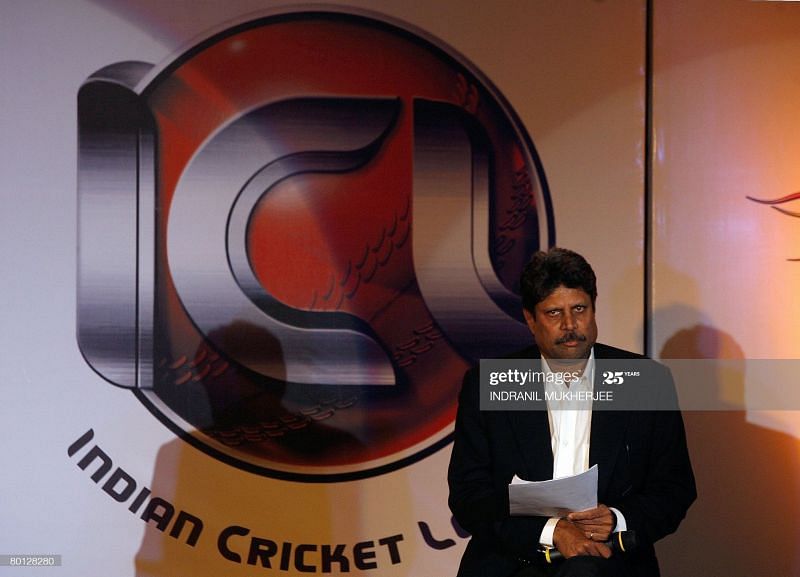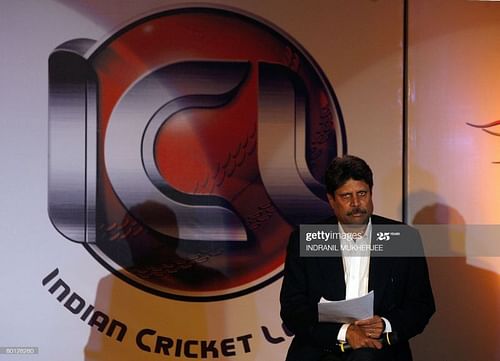
ICL: The forgotten T20 pioneer that sunk in the IPL limelight

Men’s cricket has been utterly preferential when it comes to two brothers playing the game together. Whether it was the Kiwi pair of Brendon and Nathan McCullum, Morne and Albie Morkel from South Africa, Kevin and Niall O’Brien of Ireland, the ‘Pathan Bandhu’ of India, or even the Australians Steve and Mark Waugh, one brother reached the pinnacle of stardom while the other - the elder one, more often than not - saw popularity elude him as he sledded into obscurity.
The distinction, sometimes, was on merit and the persona and at other times on the cricketing milieu of their eras. It can’t go unnoticed that the English all-rounder Sam Curran’s bruvver Tom, and the elder of the Pandyas, Krunal, are ostensibly on the path to the same paradigm.
Most T20 Cricket fans might have wondered why the marquee Indian Premier League was named similar to the exalted English football championship. This was because the name ‘Indian Cricket League’ was already wedded to a similar competition.
The IPL impact
The IPL, as we know it today, is a cash-printing mint with the almighty dollar. It makes around one-third of the global cricketing revenue and stands alone as the biggest league in the game. It is manifest by its brand value which is more than the concerted amount of the Caribbean Premier League, Big Bash League and the Pakistan Super League.
The IPL, a brainchild of, and nursed into existence,by magnate Lalit Modi was one answer to a lot many questions. For the Board of Cricket Control in India (BCCI), the answer to their desire of heft in the ICC; for upcoming affluent investors, a market like no other; and for the emerging middle-class, a dollar of entertainment on their cent. For the Indian public as a whole as well, it gave something unprecedented - a brand that was their own, a global event by and for them and a revolution that they were leading.
Despite doubts and apprehensions, the IPL superseded them all. It became a lot bigger than what most expected. It changed how Indians and the world looked towards cricket. It brought in stars and major leaguers and made them even bigger celebrities. The IPL, through its deeds, both high and ignominious, united a country riven by divisions. More than the World Cups, more than playing athwart Pakistan, the IPL made India a cricketing country.
All Brendon McCullum till now. The Nathan of the two came to fore in 2007, a year before the IPL. Amidst tumultuous times and through the aplomb of another czar, Subash Chandra, the Indian Cricket League (ICL) was born.
Chandra, in his bid to step in the up-and-coming sports broadcasting business, tried his hands in both international and national rights.
He failed first in the year 2000 when a 7-year opportunity for global broadcasting rights of the ICC was lost even after securing the highest bid. Four years later, he fluffed again in securing national broadcast rights for four years - again after his channel Zee Sports (part of Zee Entertainment Enterprises) had bid the highest amount. The latter deal also included a special offer from Zee that promised to pay an additional amount in return for BCCI’s nod on the ICL.
An indignant Chandra locked horns with the BCCI oligarchy, tried his might and even played his part in toppling the then BCCI president Jagmohan Dalmiya. Much to his chagrin, the BCCI remained impassive about the ICL.
ICL against all odds
Chandra’s idea behind the ICL was, as he explains in his book The Z Factor, to strengthen the bench strength of an under-performing Indian team of 2006-2007. This domestic league was supposed to be in a T20 format which was, at that time, considered somewhat sacrilegious to the quaint Test cricket. It was meant to give a stage for youngsters to play alongside national and international stars and stake their claim through a fast-paced and attractive league.
He went ahead with it without the cricket board’s support, though. As a result, the BCCI got insecure and tried to pull all stops. They cajoled some and exhorted (using bans) other players to not take part in the league. Advertisers and sponsors were advised against partnering with the ICL and state associations didn’t permit Zee to use their stadiums. Nothing stopped Chandra, and he used his contacts in government to arrange a couple of makeshift grounds to get the first season rolling.
An executive board was created. Indian World Cup-winning captain Kapil Dev was the chairman and erstwhile stars including, Anjingsora Risora, Tony Greig, Dean Jones and Kiran More were its members. All of these men faced heat from both the BCCI and the ICC and lost the good-book berth of their boards. Kapil Dev was even sacked from his post of the chair at the National Cricket Academy for conflict of interest. After the league's diminution, he had to eventually resign from the ICL.
The inaugural series, named the ICL 20-20 Indian Championship, commenced on November 30, 2007. Six teams named after cities Delhi, Chandigarh, Kolkata, Mumbai, Hyderabad,and Chennai vied in 20 matches including the knockouts. Chennai Superstars won the final on December 16 by beating Chandigarh Lions by 12 runs.
A second tournament named the ICL 20s Grand Championship began in March 2008. This time it was bigger and better with a couple more teams - a Pakistan specific Lahore Badshahs and Ahmedabad Rockets. An additional ground in Gujarat also added some more variety. This time the ICL even provided the entertainment it promised with many close-fought matches and a tied final. Hyderabad trumped Lahore in a bowl off and lifted the title.
There was a third event as well - the ICL 20s World Series. This had three teams namely ICL India, ICL Pakistan and ICL World. This began just after the Grand Championship on 9th April 2008 and went on till 15th April.
None of the Indian superstars dared to go against BCCI’s will but some names like Brian Lara and Inzamam-ul-Haq managed to glean some attention toward the tournament. Other popular players included Michael Kasprowicz, Russel Arnold, Ambati Rayudu, Rohan Gavaskar, Stuart Binny, Azhar Mahmood and Mohammad Sami.
Season 1 of the ICL thus saw a fine response, and Zee was able to recover some of its investment. It was being envisaged from the ratings and viewer response that the ICL will soon start to gain something in the near future. But that was never meant to be.
Season 2, which started in late 2008, was cut short by the Mumbai terror attack of 26th November and that Pakistani cricketers were a cog in the ICL wheel didn’t help its cause.
The 2008 global depression hit the ICL's advertising revenue hard. Moreover, unlike the IPL, the ICL was all Zee’s investment. A major share of capital that could have come from selling the teams didn’t, for it was Subhash Chandra and Zee who owned all the teams. It was their overconfidence in the league's success that eventually deprived them of the fuel to continue.
The ICC refused to recognise the ICL until and unless the BCCI did so. This hurt the professionalism of ICL which the ICC would have bestowed on it with its umpires and other support. Besides, even other organisations like the Bangladesh Cricket Board slapped broadcasting restrictions and stringent bans on its players to preclude them from joining the ‘rebel’ league.
The ICL tapered off with the precipitous rise of IPL. The latter had all the might and support of BCCI and ICC, unhindered access to all the national and international stars, the best stadia and world-class services. The IPL took the centre stage big time, and the ICL was in no time a bygone failure.
The legacy of ICL
A deeper look at the sport’s history will show the retrospective nature of the ICL's rise and fall. The league had a lot of similarities with the Kerry Packer World Series Cricket that shook the ICC and the whole cricketing world in the 70s.
Packer, an Australian media mogul, started his rebellious tournament after his channel was denied exclusive rights for Australia’s Test matches in 1976.
Like Chandra in 2007, Packer also brought in players from all around the world with lucrative contracts. Also like Chandra, at the base of Packer's mutiny was a new cricket format: the 50-over matches were still a new phenomenon back then.
Packer had taken the fight against the ICC head on and eventually won. Chandra too is looking for similar results with cases pending against the ICC and BCCI in various courts in London and India.
Packer’s series left a huge legacy, not the least the One Day International format and the ensuing World Cups. The World Series made modern helmets, day-night matches, coloured dresses and field restrictions voguish in the 70s.
All of these feaures are now an instrinsic part of contemporary cricket. Looking back, one might think if Chandra had a similar impact in mind. He was (and is) no less a media kingpin then Packer; his ideas were similarly prescient, and his resolve, similarly formidable.
The ICL did leave some bequest behind, though. BCCI feared younger players, enticed by the money, might skip domestic competitions and join the ICL. To prevent this, the board eminently increased the prize money for winners, runners-up and losing semi-finalists across all domestic tournaments.
Today, domestic cricketers earn around Rs 35,000 a day for a first-class game which is more than double what they earned in 2005-2006. The ICL was also, in a way, a trial run for the IPL. The BCCI saw ICL’s eye-catching potential, learned from its mistakes and made a bigger, better competition.
Click here to see IPL points table list 2020.
In hindsight, it didn’t matter if the elder brother wasn’t in a league of his own and that he was known by the name of his younger pal. That Nathan McCullum played a part in Brendon’s success and concurrently took 121 wickets for his country was a good enough contribution. Something worth remembering.